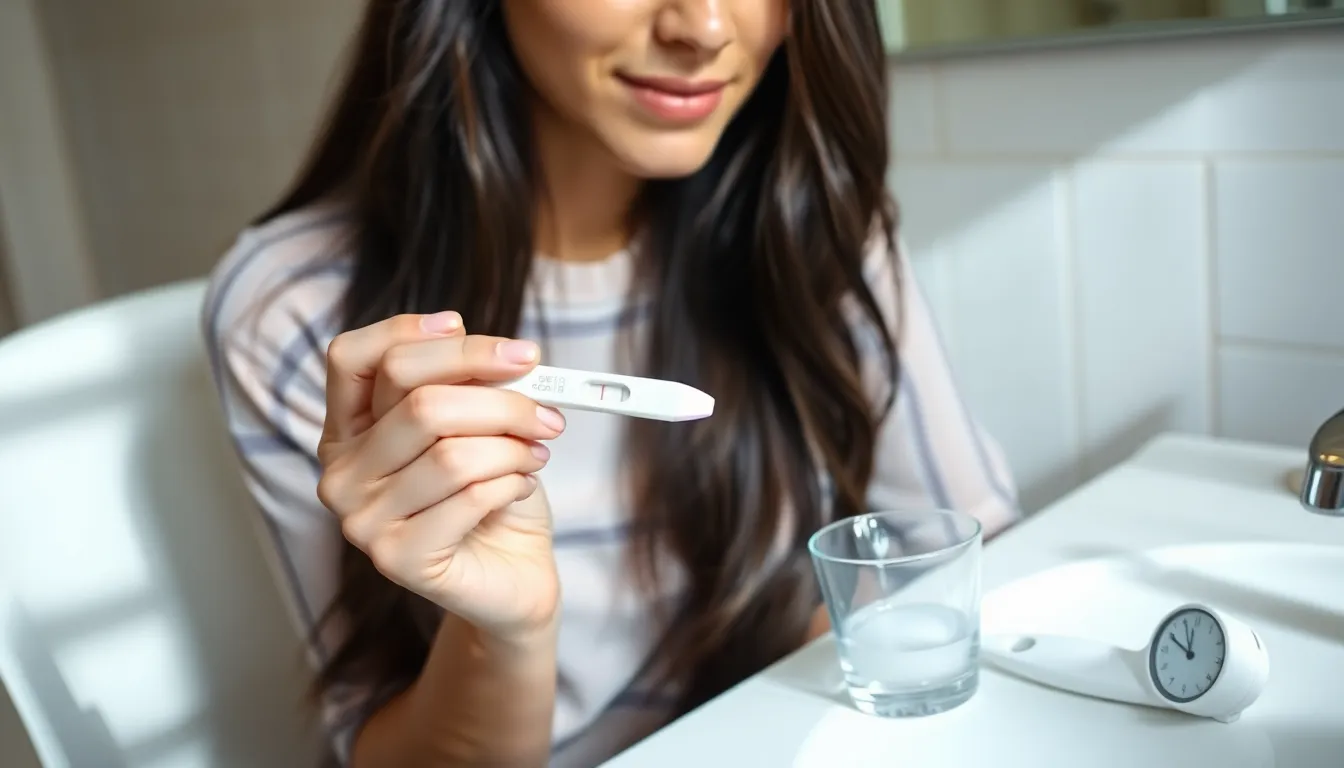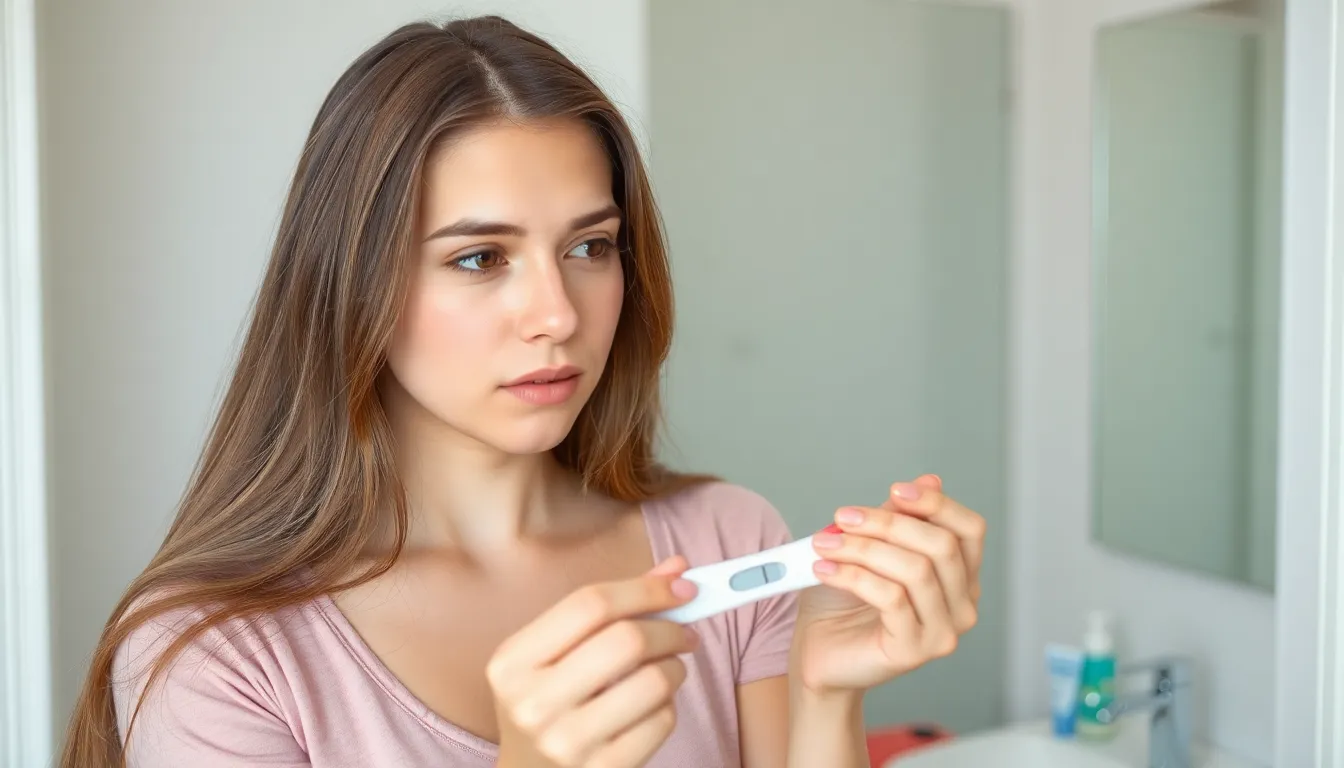When life throws a surprise your way, a pregnancy test can be the ultimate game changer. Whether it’s excitement or sheer panic, the moment you realize it’s time to check can feel like a scene straight out of a sitcom. With countless options on the market, choosing the right test might seem like picking a favorite child—impossible!
Table of Contents
ToggleUnderstanding Pregnancy Tests
Pregnancy tests play a crucial role in confirming or denying pregnancy, offering a mix of emotional responses. Knowing more about the different types of tests and how they function helps individuals make informed decisions.
Types of Pregnancy Tests
Home pregnancy tests come in various formats, including digital and test strip versions. Digital tests display results as “pregnant” or “not pregnant,” while test strips involve observing a color change. Blood tests, conducted in healthcare settings, can detect pregnancy earlier than home tests. The quantitative blood test measures the hormone hCG in the bloodstream, providing more detailed information about pregnancy progression. Each type has its pros and cons, catering to different needs.
How Pregnancy Tests Work
Pregnancy tests detect the hormone hCG, produced after a fertilized egg implants in the uterus. Home tests utilize urine samples, where the presence of hCG causes a chemical reaction, leading to visible results. Blood tests work similarly, but they analyze hCG levels in the blood. Timing plays a key role; testing too early can yield inaccurate results. Understanding the testing window enhances reliability and aids individuals in planning next steps based on their results.
How to Take a Pregnancy Test


Taking a pregnancy test involves specific steps to ensure accuracy and reliability.
Instructions for Home Tests
Begin by reading the instructions provided with the test. Gather materials like a clean cup and a timer for convenience. Collect a urine sample, preferably from the first morning urine, as it usually contains the highest concentration of hCG. Dip the test strip into the sample or use the dropper if applicable. Then, wait for the recommended time, usually between 2 to 5 minutes. Check the results against the test window, observing the lines or symbols displayed. Dispose of the test per local regulations.
Important Considerations
Timing plays a critical role in obtaining reliable results. Tests provide optimal accuracy about one week after a missed period. Consider factors such as expired tests, which may lead to incorrect readings. Understanding test sensitivity, or the ability to detect low levels of hCG, matters as well. While some tests detect pregnancy as early as six days before a missed period, many experts recommend waiting for the missed period for the most dependable outcome. If symptoms persist despite negative results, consulting a healthcare provider is advisable.
Accuracy of Pregnancy Tests
Accuracy in pregnancy tests varies based on several key factors. Choosing the right test plays a significant role, with home tests generally achieving over 99% accuracy when used correctly. Factors influencing accuracy include timing, sensitivity of the test, and user adherence to instructions.
Factors Affecting Accuracy
Testing too early often leads to inaccurate results. hCG levels double every two to three days, making it crucial to test after a missed period for best results. Test sensitivity also varies, with some tests detecting lower hCG levels than others. Following instructions precisely ensures more accurate outcomes, as improper sample collection or interpretation can skew results.
Understanding Test Results
Interpreting test results correctly is vital for accurate understanding. A positive result usually indicates pregnancy, while a negative result can sometimes occur even if pregnant, especially if tested prematurely. Reading the test within the recommended timeframe is important, as waiting too long can cause evaporation lines that mimic a positive result. If doubts about the results persist, consulting a healthcare provider offers clarity and guidance.
When to Take a Pregnancy Test
Determining the right time for a pregnancy test significantly affects the accuracy of the results. Timing hinges on understanding hormonal changes and their detection.
Early Detection
Pregnancy tests can help detect pregnancy as early as six days before a missed period. Tests with high sensitivity may identify the hormone hCG in urine, indicative of pregnancy. Users should note that levels of this hormone rise rapidly after implantation. Testing too early can lead to false negatives, as hCG may not reach detectable levels. It’s crucial to follow the specific test instructions to ensure optimal timing and enhance accuracy.
Best Times for Testing
For the most reliable results, the best time to take a pregnancy test is shortly after a missed period. Morning urine contains the highest concentration of hCG, improving detection accuracy. Testing one week after the expected period provides ample time for hCG levels to increase. Users should consider their cycle regularity when determining the best testing time. If there’s ever uncertainty, repeating the test a few days later can provide clarity and confirmation.




